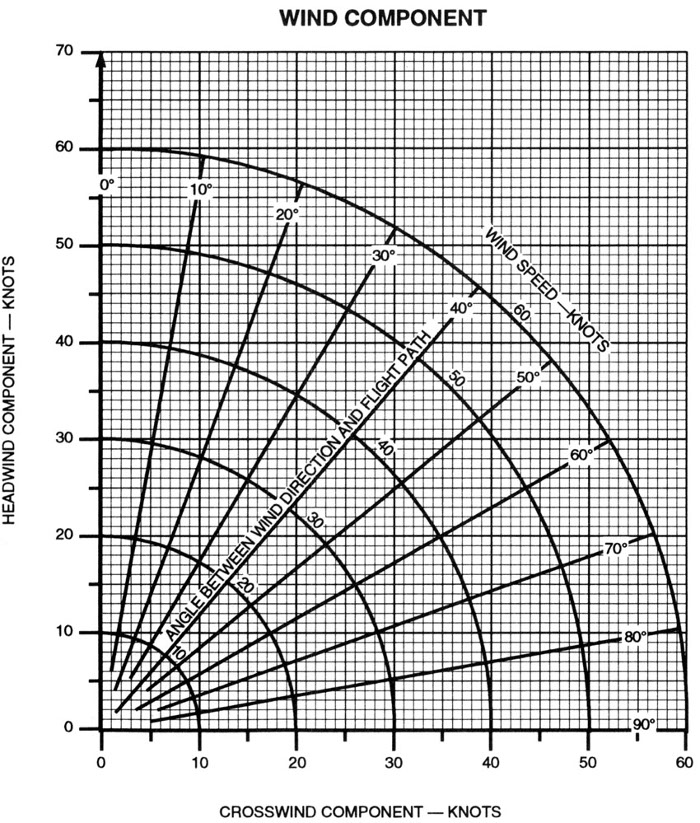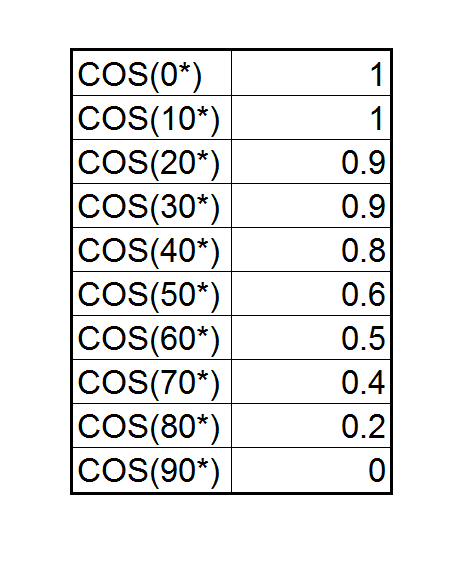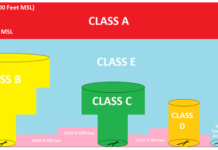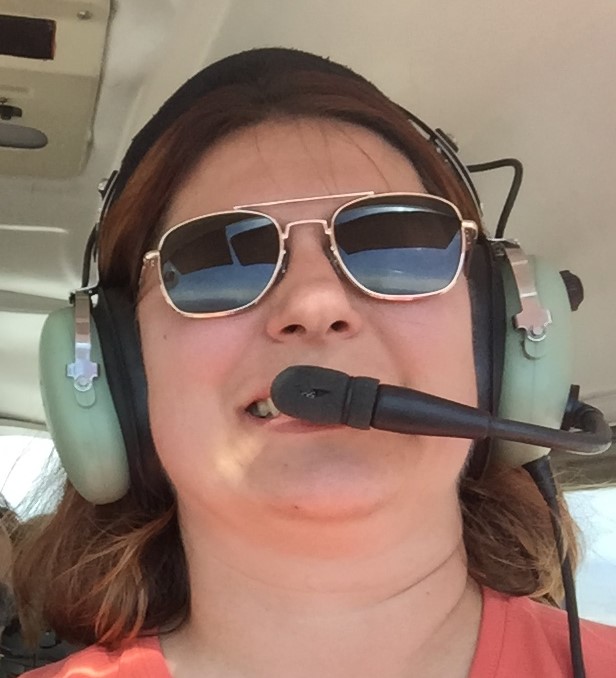What is Crosswind?
Winds are something pilots learn to have a love-hate relationship with. A tailwind gets us there much faster and a headwind can make for a very long trip. However, one type of wind can ground pilots before they make their flight is crosswinds.
Crosswinds is the amount of wind that hits your plane from the side. If the strength of the wind is enough you can have a really bad day. Your plane may be blown from the runway causing damage to the plane, or worse, you and your passengers.
What is Headwind?
While headwinds are frustrating while in flight, during takeoff and landing a headwind is preferred. A solid headwind during takeoff will have the plane in the air much faster. And while landing a headwind helps bleed off speed while keeping the plane off the runway for a little while longer.
Understanding the crosswind and headwind components is critical to having a safe flight. There are several methods to determine both while you are on the ground, and a few ‘quick tricks’ for when you are in the air.
A note of caution. Any of these calculations are representations ONLY. The actual crosswind component can and does vary depending on the day, the wind and the airport you are at. Use your calculations as a guide and remember that things often change very quickly in the plane. Remember to always fly the plane, rather than the paper.
What information do you need?
In order to perform any crosswind or headwind calculation you need 2 pieces of information:
The ANGLE between the runway heading and the Wind. To find this you simply subtract the larger number from the smaller number.
For example: Runway 8 has a heading of 080 and the Wind is from 110. Simply subtract 80 from 110 (110 – 80) to get 30*.
The VELOCITY of the wind. This is given by the ATIS and is usually in Knots (KTS).
Any GUST information is also needed to get a more accurate picture of the crosswind that affects your plane.
For all calculations for each crosswind calculator below we will use the following two scenarios:
Scenario 1:
- 30* ANGLE
- 20 KTS
Scenario 2:
- 50* ANGLE
- 20 KTS
Crosswind Charts
One of the first ways I learned to calculate the crosswind was from the Jeppesen Private Pilot Manual. This chart, like a lot of charts for aviation is an analog chart. The downsides of this are inaccurate results and some element of guess work.

To read this chart and determine your crosswind and headwind component you perform the following steps:
- Determine the angle between the runway heading and the wind.
- Find the point where the wind angle line and the wind velocity arc meet.
- Look to the left to find the headwind component.
- Find the crosswind component by following the vertical lines down to the bottom of the chart.
Using the scenario information on this chart we get the following crosswind and headwind components:
Scenario 1:
- 10 KTS Crosswind
- 17 KTS Headwind
Scenario 2:
- 15 KTS Crosswind
- 13 KTS Headwind
Sine / Cosine Angles
Very few ground lessons don’t involve math, and this concept has a mathematical explanation behind it. If you can remember back to your algebra ( or trigonometry ) classes you may remember sine/cosine/tangent angles. While we could go into a deep math class I’d rather stick to a higher level. For this exercise you will need the sine of the angle to determine your crosswind component.
Our formula is: Crosswind = Wind Speed * Sin( Wind Angle )
To make maters a little easier here is a little chart to take care of the sine calculation (note, this chart is rounded for ease of use):

Using our above scenario and the rounded sin calculations you get the following:
Scenario 1:
Crosswind = 20 KTS * SIN ( 30 )
= 20 KTS * 0.5
= 10 KTS
Scenario 2:
Crosswind = 20 KTS * SIN ( 50 )
= 20 KTS * 0.8
= 16 KTS
For Headwind calculations you would use the Cosine of the Angle, making the calculation:
Headwind = Wind Speed * COS ( Wind Angle )
Here is a nifty chart to help you remember those angles (note, these values are rounded for ease of remembering).

Using our information from above our headwind component is:
Scenario 1:
Headwind = 20 KTS * COS( 30 )
= 20 KTS * 0.9
= 18 KTS
Scenario 2:
Headwind = 20 KTS * COS ( 50 )
= 20 KTS * 0.6
= 12 KTS
This gives you a more accurate answer than the wind component chart above if you needed it.
Now, for testing purposes, I would wait to round your results until the final answer as that may make a difference in the results.
Crosswind Table
If math is more than you want to do, here is a handy chart created to give you accurate data.

For this chart, simply match the Angle column with the wind speed row to find your Crosswind component.
For the Headwind calculation you only have to subtract the wind angle from 90* and follow the column down to the wind speed. So, 90* – 30* = 60*. Meaning we are going to use the 60* column for our angle.
Scenario 1:
- 10 KTS crosswind
- 17.3 KTS headwind
Scenario 2:
- 15.3 KTS crosswind
- 12.9 headwind
Online Calculators
There are a few online calculators that will do all the work for you however they won’t help you when you are in the cockpit and need to do calculations on the fly. However, for the completeness of this post here are some of the online calculators.
Quick Methods for in the Cockpit
Now I’m not sure about you, but I don’t keep a crosswind calculator or a crosswind chart handy in the cockpit. And I guess I could remember the SIN/COS tables and do a boat load of math in my head while I’m trying to fly the plane. However, that doesn’t sound appealing with everything else I have to remember to do.
So, here are a few simple methods to get you in the close ball park of what the crosswind component would be.
Watch Method
This is an interesting method that I learned about while researching crosswinds. I have yet to use it in real life, but for very rough math it works to help remember what the crosswind should be.

Your watch is a representation of the Angle of the wind. The 60 minute, or 12 o’clock position, represents 60* and 1 or ‘the whole’ wind speed. Effectively all crosswind.
At 45 minutes it’s 45* and 3/4 of the wind speed.
30 minutes is 30* and 1/2 of wind speed.
15 minutes is 15* and 1/4 of wind speed.
Scenario 1:
- 10 KTS crosswind
- no headwind calc
Scenario 2:
For this calculation I used the 45*, 3/4 wind speed since that is the closest data point to the 50 * angle.
- 15 KTS crosswind
- no headwind calc
This method has an inherent flaw that is found in the second scenario. Unless you want to do additional math, the 50* variance is not accounted for. So one can reasonably state that the crosswind is “probably a little more than 15 KTS” and when you are in need of new information in the cockpit this will get you darn close to what you need.
“Sixth” Method
This ‘rule of thumb’ method takes every 10* and makes it a fractional value up to 60*
So,
10* = 1/6 wind speed 20* = 2/6 wind speed 30* = 3/6 wind speed 40* = 4/6 wind speed 50* = 5/6 wind speed 60* = 6/6 wind speed
These fractions are then multiplied to the wind speed.
Our example then becomes 30* angle = 3/6 or 1/2 of wind speed, which is 20 KTS for a total crosswind component of 10 KTS.
Scenario 1:
- 10 KTS crosswind
- no calc for headwind
Scenario 2:
- 16.7 KTS crosswind
- no calc for headwind
Adjusting for Gusts / Wind Variations
With all things, the wind is always changing. Any pilot who has had at least two lessons has most likely heard an ATIS report that mentions gusting winds. And if they haven’t heard it on the ATIS they will get it on a test question for the METAR understanding.
This bodes the question, how do you calculate for gusts? Well, the same way you calculate for the normal winds. You need the angle and wind speed and then you perform the calculations exactly the same for each method. Your crosswind and headwind component will be somewhere between the two results you get back.
Plane Limitations
Every plane, even the big birds have limitations. Crosswinds are no exception to these limitations. In the Cessna 172 that I fly there is a POH direct crosswind limit of 15 KTS. This is more than I would currently fly in but it’s nice to know what the test pilot’s said the plane could do.
Now, there are some who say that the POH is only a recommendation, not a limit, but I’m not in the business of becoming a test pilot any time soon and my life and my passenger’s lives all depend on my ability to safely control the plane.
In my opinion, it is best to stick with the limits listed in POH and determine your personal limits from there.
Personal Limitations
Personal limitations are those limits you set on yourself. What you are comfortable flying in or when you have reached the extent of your knowledge and skill. These are the limitations that get some pilots into trouble when it comes to flying in crosswinds.
The problem with personal limitations, is that you usually find your limit by trying a skill / maneuver / flight and discovering that you are not ready for that event.
It’s the flying equivalent of a catch 22. You should set personal limits but you don’t know what your personal limits are until you have reached them.
For me, because of the weather patterns here in the desert I have a personal minimum where I don’t fly in the afternoon. The wind can be too erratic and the gusting makes for some really unstable air. Even if the wind is straight down the runway I would be too wary to fly as things can, and do, happen in an instant.
What is your preferred method for calculating crosswinds / headwinds? Is there a crosswind calculator that I missed? How often have you actually taken the time to calculate the crosswind component other than for a test? Let me know in the comment section.






